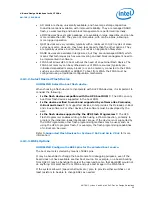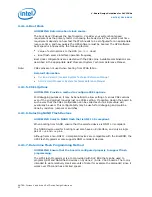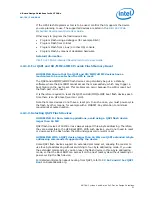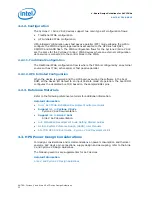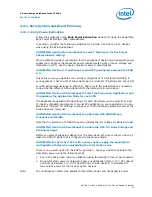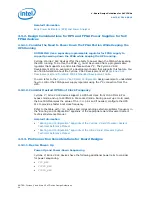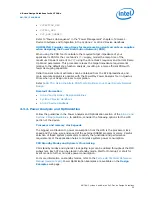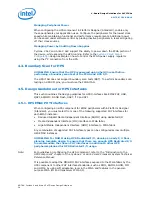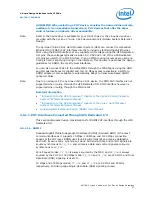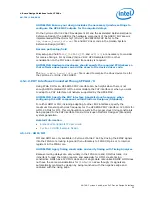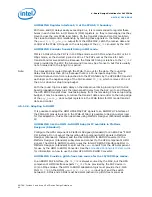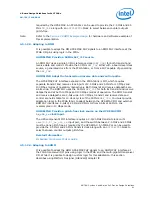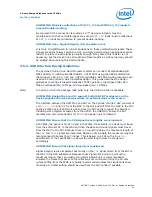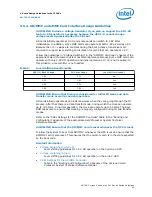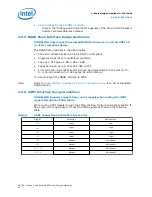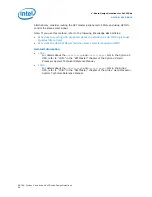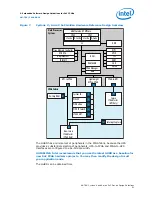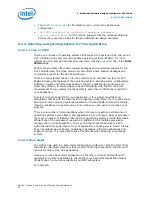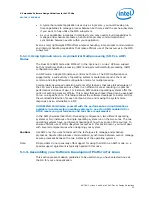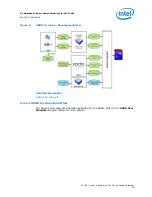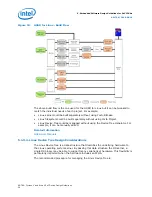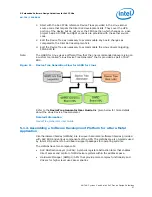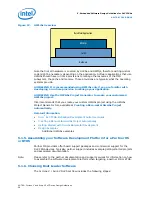
GUIDELINE: Minimize reflections at PHY
TX_CLK
and EMAC
RX_CLK
inputs to
prevent double-clocking.
Be cognizant if the connection is routed as a “T” as signal integrity must be
maintained such that no double-edges are seen at
REF_CLK
loads. Ensure reflections
at
REF_CLK
loads are minimized to prevent double-clocking.
GUIDELINE: Use a Signal Integrity (SI) simulation tool.
It is fairly straightforward to run SI simulations on these unidirectional signals. These
signals are almost always point-to-point, so simply determining an appropriate series
resistor to place on each signal is usually enough. Many times, this resistor is not
necessary, but the device drive strength and trace lengths as well as topology should
be studied when making this determination.
4.5.2. USB Interface Design Guidelines
The Cyclone V/Arria V SoC Hard Processor system can connect its embedded USB
MACs directly to industry-standard USB 2.0 ULPI PHYs using the HPS Dedicated I/O
that support 1.8V, 2.5V, 3.0V and 3.3V I/O standards. No FPGA routing resources are
used and timing is fixed, which simplifies design. This guide describes the design
guidelines covering all supported speeds of PHY operation: High-Speed (HS) 480
Mbps, Full-Speed (FS) 12 Mbps, and Low-Speed (LS) 1.5 Mbps.
Note:
In Cyclone V SoC U19 package (484 pins) only one USB controller is available.
GUIDELINE: Design the board to support both USB PHY modes where the
device supplies the clock versus where an external clock is the source.
The interface between the ULPI MAC and PHY on the Cyclone V/Arria V SoC consists of
DATA[7:0]
,
DIR
and
NXT
from the MAC to the PHY and STP from the MAC to the PHY.
Lastly a static clock of 60 MHz is driven from the PHY and is required for operation,
including some register accesses from the HPS to the USB MAC. Ensure the PHY
manufacturer recommendations for
RESET
and power-up are followed.
GUIDELINE: Ensure that the USB signal trace lengths are minimized.
At 60 MHz, the period is 16.67 ns and in that time, for example, the clock must travel
from the external PHY to the MAC and then the data and control signals must travel
from the MAC to the PHY. Because there is a round-trip delay, the maximum length of
the
CLK
and
ULPI
signals are important. Based on timing data the maximum length is
recommended to be less than 7 inches. This is based on a PHY with a 5 ns
Tco
specification. If the specification is slower the total length must be shortened
accordingly.
GUIDELINE: Ensure that signal integrity is considered.
Signal integrity is also important but mostly on the
CLK
signal driven from the PHY to
the MAC in the HPS subsystem. Because these signals are point-to-point with a
maximum length, they can usually run unterminated but it is recommended to
simulate the traces to make sure the reflections are minimized. Using the 50-ohm
output setting from the FPGA is typically recommended unless the simulations show
otherwise. A similar setting should be used from the PHY vendor if possible.
4. Board Design Guidelines for SoC FPGAs
AN-796 | 2018.06.18
AN 796: Cyclone V and Arria V SoC Device Design Guidelines
43

